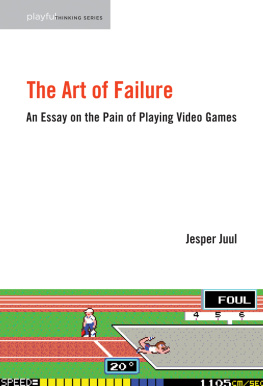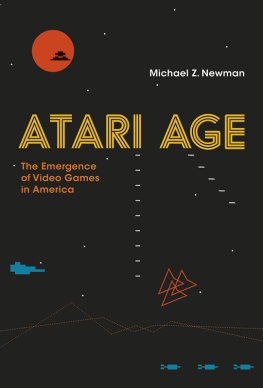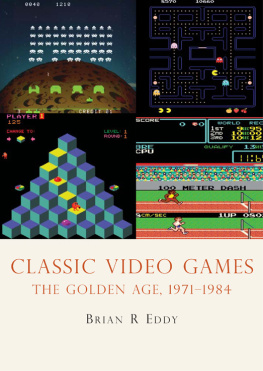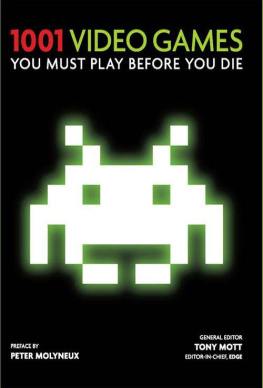
Intermedia GamesGames Inter Media

Contents
The editors would like to thank the many friends and colleagues whose eagerness to talk about video games and intermediality at various occasions over the years has contributed to this volume. Special thanks are due to Mary Al-Sayed and Erin Duffy, who guided this volume from the proposal stage to its final realization and graciously dealt with several delays. We are also thankful to the anonymous peer reviewers, whose suggestions helped make this volume more coherent and focused. Finally, we would like to thank the University of Graz for their generous financial support of the translation of Stephan Schwingelers chapter.
Jeff Thoss and Michael Fuchs
In 1982, at the height of the golden age of arcade video games, Disney released TRON, a film today largely remembered for its pioneering use of computer-generated imagery. However, the movie also constitutes an interesting early example of the kind of phenomena this collection examines. TRON is not only a film about video games featuring a game developer and arcade owner as the hero, it also seeks to emulate the spatial logic and audiovisual make-up of classic titles such as PONG (Atari, 1972), Pac-Man (Namco, 1980), and Battlezone (Atari, 1980) in the iconic scenes set in its cyberspace world called The Grid. In a smaller-scale version of contemporary transmedia franchising strategies, TRONs release was moreover accompanied by an eponymous arcade game (Bally Midway, 1982), which recreates a number of the films action and game sequences in the medium they are based on. The TRON franchise has since expanded to include other motion pictures and games as well as novels and comic books, but the basic premise of the franchise rests on the idea of the interrelatedness of the mediaintermediality.
As early as 1982, TRON thus showcased elements of the complex intermedial network in which video games exist, as they serve as the inspiration for the aesthetic of particular cinematic sequences, which are, in turn, adapted for the medium of the video game. These media entanglements have only increased in more recent franchise entries. For example, not only does TRON: Legacys (2010) opening sequence intelligently interweave the built reality of American cities with their virtual doubles, but the film also incorporates the first films iconic arcade hall. Covered up in a corner stands TRONthe arcade game. However, it is misplaced in the arcade, since, in the original movie, there never was such a game. As Jason music to tap into the nostalgia for the 1980s, which has been nearly omnipresent in early twenty-first-century popular culture.
The relationships exemplified by the TRON franchise are a hallmark of the media landscape as it has recently been theorized. In their book on Understanding New Media (1999), Jay David
Digital media occupy a privileged position in this constellation. As early as 1984, Alan
This collection explores the place of video games in these intermedial networks as well the nature of the various relationships between video games and other media. As such, we evidently take our cue from the above-mentioned scholars and the discussions that have shaped Anglo-American media studies over the past two decades. However, our endeavor also arises from the context of intermediality studies, which has largely been developed in continental Europe, taking its conceptual inspiration from, among others, Dick Higgins notion of an intermedia art that is situated in-between established forms.
In one of the few explorations of video games from the vantage point of intermediality studies, Hans-Joachim
As with any typology, Backes model quickly reaches its limitsa fact that he himself acknowledges. Accordingly, we have decided not to establish a working typology for the case studies which follow. After all, this collection seeks to demonstrate that video games are one of the richest areas with regard to intermedial phenomena in the current mediascape. In so doing, this collection places European and North American scholarly traditions into a productive dialog that enables a deeper understanding of the intermedial dimension of video games, on the one hand, and their various roles in todays media environment, on the other.
Still, we have divided our subject matter into three main areas of investigation, each of which features several essays. To begin with, there is the question of how and why video games so frequently incorporate other media. This dimension covers what intermediality studies has discussed under terms such as intermedial referenceone medium thematizes, evokes, or imitates elements or structures of another, through the use of its own media-specific meansor, more generally, the representation of one medium by another. Here, our interest lies specifically with what video games bring to the table as specific gateways into a transmedia universe.
The first section opens with two chapters exploring digital games debt to cinema for numerous of its stylistic devices. The connection between video games and film was among the first to be explored systematically, and it remains one of the few that has a substantial body of criticism devoted to it. Hvard Vibeto takes us right into the matter of games imitating cinema, as he focuses on the ways in which the contemporary military first-person shooter adapts the spectacular aesthetics of Hollywood blockbusters. Rejecting the notion that graphical prowess is mere eye candy that detracts from gameplay, Vibeto argues that audiovisual spectacle instead constitutes the main attraction in a genre whose gameplay mechanics have not substantially changed since the 1990s. Vibeto shows how recent entries in the Call of Duty and Battlefield series have used increasing hardware capacities and advances in game engine design to recreate the impact aesthetics audiences know from blockbuster cinema.
In the second chapter, Bernard Perron, Hugo Montembeault, Andrane Morin-Simard, and Carl Therrien deal with one of the most frequently discussed notions in the context of the interrelations between video games and film, namely that of montage. However, theirs is not another argument against or in favor of a particular critical vocabulary. Rather, the authors adopt a metaperspective on the issue and, departing from the sociolinguistic concept of discourse community, examine how and why the connection to concepts from film (studies) was made in the first place. Surveying a broad corpus of journalistic writing on the one hand and scholarly writing on the other, this contribution not only shows how the understanding and purpose of particular terms differs in the two communities but also how strongly it is shaped by the social context in which communication takes place.
The next three chapters in this section examine video games connections to three different media: photography, print literature, and comic books. Sebastian Mring and Marco de Mutiis map the increasingly complex field of in-game photography. Bringing together concepts from visual culture studies and game studies, they develop a typology of four basic forms of intermedial relationships that are situated between simulation and remediation of photographic practices in digital games. The authors distinguish two cases where photography is directly implemented into a game, either as a central part of gameplay mechanics essential to the progression through a game or as an optional photo-mode suspending the actual gameplay. Moreover, Mring and de Mutiis also consider two cases where photography is brought to the game from outside, either through the practice of taking screenshots or through photo-oriented user modifications.
Next page
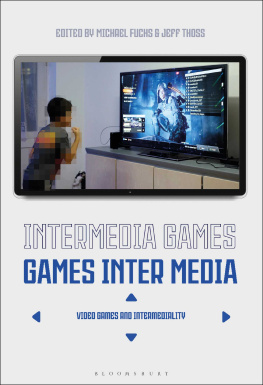

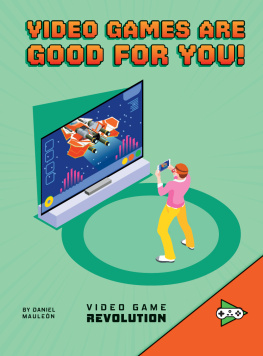


![Mark J. P. Wolf (editor) - Encyclopedia of Video Games: The Culture, Technology, and Art of Gaming [3 volumes]](/uploads/posts/book/279290/thumbs/mark-j-p-wolf-editor-encyclopedia-of-video.jpg)
